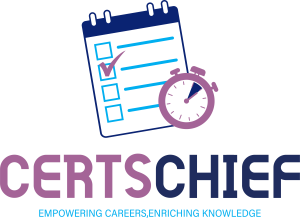Scrum Practice Test and Questions Answers PDF
Scrum Certification Exam Guide
Scrum is an agile framework used in software development to manage complex projects. Scrum certification is designed to validate the skills and knowledge of professionals in Scrum methodologies. In this article, we will discuss the Scrum certification exam guide, passing tips, and the importance of Scrum certification.
The Scrum certification exam is designed to test the candidate’s knowledge and understanding of Scrum methodologies. The exam consists of multiple-choice questions and is usually timed. Here are the topics covered in the Scrum certification exam:
- Scrum Framework: Understanding the Scrum framework and its principles.
- Scrum Roles: Understanding the roles of the Scrum Master, Product Owner, and Development Team.
- Scrum Artifacts: Understanding the Scrum artifacts, including Product Backlog, Sprint Backlog, and Increment.
- Sprint Planning: Understanding the Sprint Planning process and how to create a Sprint Goal.
- Sprint Execution: Understanding how to execute a Sprint and manage the Daily Scrum.
- Sprint Review: Understanding the Sprint Review process and how to conduct a Sprint Review.
- Sprint Retrospective: Understanding the Sprint Retrospective process and how to conduct a Sprint Retrospective.
Passing Tips for Scrum Certification Exam
Here are some tips to help you pass your Scrum certification exam:
- Understand Scrum Framework: Understanding the Scrum framework and its principles is essential to passing the exam. Ensure that you thoroughly understand the framework and its components.
- Study the Exam Guide: Study the exam guide to understand the exam format, structure, and content. The exam guide contains information about the exam objectives and the topics covered in the exam.
- Take Practice Exams: Taking practice exams is an effective way to test your knowledge and prepare for the actual exam. Practice exams help you get familiar with the exam format and the types of questions asked in the exam.
- Attend Training: Attending Scrum training is an effective way to prepare for the exam. Scrum training provides a comprehensive overview of the Scrum framework, its components, and its methodologies.
Importance of Scrum Certification
Scrum certification is essential for IT professionals who want to validate their skills and expertise in Scrum methodologies. Scrum certification is recognized worldwide and is highly valued by organizations looking to implement agile methodologies in their projects. Here are some benefits of Scrum certification:
- Career Advancement: Scrum certification can help you advance your career by demonstrating your expertise and knowledge in Scrum methodologies.
- Improved Earnings: Scrum certification can lead to improved earnings and higher salaries. According to research, Scrum certified professionals earn more than non-certified professionals.
- Competitive Edge: Scrum certification can give you a competitive edge in the job market. Scrum certified professionals are highly valued by organizations looking to implement agile methodologies in their projects.
Scrum certification is essential for IT professionals who want to validate their skills and expertise in Scrum methodologies. By following the exam guide and passing tips, you can prepare effectively for your Scrum certification exam. Remember to study thoroughly, take practice exams, attend training, and understand the Scrum framework to increase your chances of passing the exam. Scrum certification can lead to career advancement, improved earnings, and a competitive edge in the job market.



